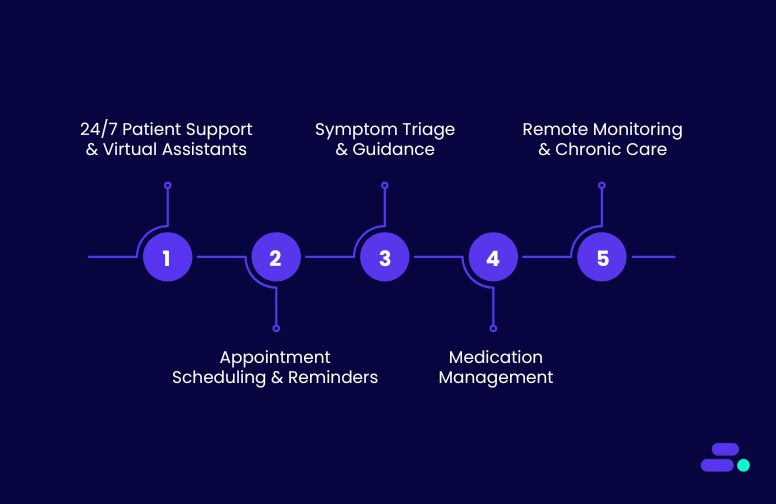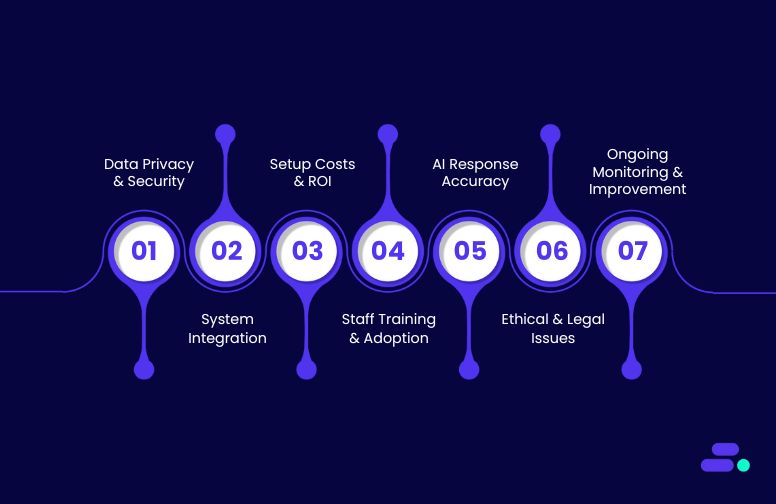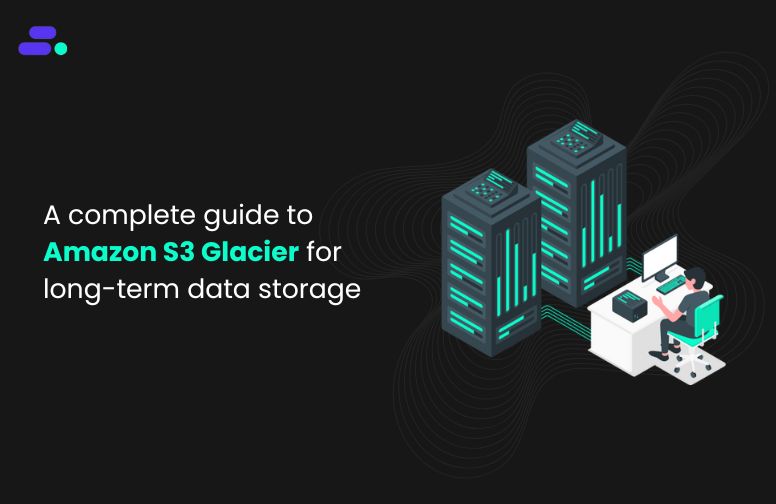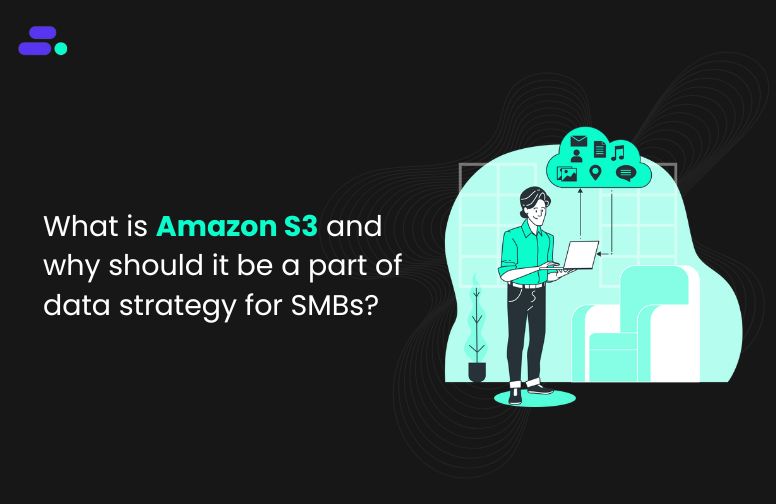This is a div block with a Webflow interaction that will be triggered when the heading is in the view.

Modernize your cloud. Maximize business impact.
Did you know the disaster recovery solution market is projected to reach USD 115.36 Billion by 2030, growing at a CAGR of 34.5%, according to this research report conducted by market intelligence company, StraitsResearch?
What do you think is causing it to rise?
Because disasters can strike anywhere and anytime, regardless of their type (natural, artificial, or technical failures). Experiencing losses due to unexpected disasters can be challenging for your business. That’s why most organizations, from SMEs to large corporations, are considering developing a cloud-based IT Disaster Recovery Plan to ensure their business runs smoothly in the event of a catastrophe. Rather than turning to traditional disaster recovery methods, these businesses prefer to use cloud-based solutions. Many market players offer cloud-based disaster recovery strategies, but AWS cloud is one of the top cloud service platforms. Because it provides various disaster recovery strategy options for small to large business organizations, you can select strategies according to your business industry, requirements, and budget.
In this article, you will get information about disaster recovery plans & strategies, and checklists available on the AWS cloud.
Why do you need cloud-based disaster recovery strategies?
Disaster recovery refers to the process of preparing and recovering from a disaster. You must always be ready to manage unplanned adverse events to run your business smoothly. That’s why you need to plan, strategies, and test cloud-based disaster recovery strategies. Cloud-based disaster recovery strategies provide solutions implemented in the cloud with the help of a specific cloud service provider. Read below 3 points to know its importance more precisely:
- You can save your security budget by investing in an entire disaster recovery site and paying as per use.
- You can access and recover any on-premises and cloud-based software and applications in case of a disaster in seconds from the cloud.
- You can minimize downtime and data loss along with on-time recovery.
These reasons would help you to know the rising demands of cloud-based disaster recovery strategies among business industries.
Develop a Disaster Recovery Plan (DRP)
Implementation of any strategy requires a plan and checklist. You must also make a disaster recovery plan and tick mark the essential checklist to implement any cloud-based disaster cloud strategy. Generally, this plan must be part of a Business Continuity Plan (BCP), which ensures business continuity during and after disasters.
The following 3 tasks will make things easy for you regarding adopting the cloud-based DRP.
Task 1: Know your infrastructure
Your first job is to understand your existing IT environment and assess the data, assets, and other resources. You must know everything, like where data has been stored, the cost of these data, and possible risks. Evaluation of the risks and threats can help you understand the possible types of disasters that might happen.
Task 2: Conduct a business impact analysis and risk assessment
Your next job is to do business impact analysis to measure the business impacts of disruptions to your workloads. Simply put, find out the business operations constraints once disaster strikes. Additionally, do a risk assessment to learn the possibility of disaster occurrence and its geographical impact by understanding the technical infrastructure of the workloads. Don’t forget to consider these two essential factors:
- Recovery Time Objective (RTO) – It refers to the maximum time (acceptable delay), an application can stay offline after the disaster to its recovery.
- Recovery Point Objective (RPO) – It refers to the maximum time (adequate time) for which you can bear data loss from your application. In other words, find the lost time between service interruption and the last recovery point.
Look at the below image to understand these factors more easily:

Image credit: Amazon AWS
Task 3: Know your workloads to implement disaster recovery in the cloud
Implementing disaster recovery on on-premise is different from implementing it in the cloud. To execute cloud-based disaster recovery effectively, you need to analyze your workloads. You must check your data centre connectivity if you have already deployed the workload on the cloud.
But, deploying your workloads on the AWS cloud would benefit disaster recovery implementation. AWS will take of everything from data center connectivity to providing fault-isolated Availability Zones ( an area to support physical redundancy), and regions.
- Go for a single AWS Region if you have high workloads, as you will get different availability zones.
- Go for multiple AWS Regions if there is a possibility of losing various data centers far from each other.
Disaster recovery strategy options in AWS Cloud
The rising popularity of AWS is happening because of more than 20 AWS services available for disaster recovery. But every business has its objective, background, and technical infrastructure. Thus, you should know all options. AWS Cloud offers four major approaches for disaster recovery, shown in the following image:

Image: Disaster Recovery Approaches
Let’s understand each approach and all available AWS services within each approach.
(1) Backup & Restore
Backup & Restore is a common approach for disaster recovery. Check the following table to learn more about it:
What it does
- Mitigate data loss and corrupted data
- Replicate data to AWS regions
- Mitigate lack of redundancy for workload deployed to a single Availability Zone
What you need to consider
- Use Infrastructure as code (IaC) for deployment, and for this, consider AWS CloudFormation or AWS Cloud Development Kit.
- Develop a Backup strategy using AWS Backup
- Create Amazon Ec2 instances using Amazon Machine Images
- Automate redeployment using AWS CodePipeline
Available AWS Services
- Amazon Elastic Block Store (Amazon EBS) Snapshot
- Amazon DynomoDB backup
- Amazon RDS snapshot
- Amazon EFS backup
- Amazon Redshift snapshot
- Amazon Neptune snapshot
- Amazon DocumentDB
Check the following image to understand the backup and restore architecture on the AWS cloud.

Image: Backup and restore architecture
(2) Pilot Light
Pilot light is a second approach for disaster recovery through replication (continuous, cross-region, asynchronous). Check the following table to learn more about it:
What it does
- Helps you to replicate data from one Region to another region
- Allows you to work on your core infrastructure and quickly provision a full-scale production environment through scaling servers and switching on
What you need to consider
- Automate IaC and deployments to deploy core infrastructure at one place and across multiple accounts and Regions
- Use different accounts per Region to offer the highest level of security isolation and resources
Available AWS Services
- Amazon Simple Storage Service (S3) Replication
- Amazon Aurora global database
- Amazon RDS read replicas
- Amazon DynamoDB global tables
- Amazon DocumentDB global clusters
- Global Datastore for Amazon ElastiCache for Redis
- AWS Elastic Disaster Recovery
- For Traffic Management
- Amazon Route 53
- AWS Global Accelerator
Check the following image to understand the Pilot Light architecture on the AWS cloud.

Image: Pilot Light architecture
(3) Warm Standby
The warm Standby approach focuses on scaling. Check the following table to learn more about it:
What it does
- Ensure the scaling and fully functional copy of the production environment in another Region
- Offers quick and continuous testing
What you need to consider
- Scaleup everything which needs to be deployed and running
- Since it is similar to the Pilot Light approach, consider factors, RTO & RPO for selecting one from these.
Available AWS Services
- You can use all AWS services mentioned in the above two approaches for data backup, data replication, infrastructure deployment, and traffic management.
- Use AWS Auto Scaling for scaling resources
Check the following image to understand the Warm Standby architecture on the AWS cloud.

Image: Warm Standby architecture
(4) Multi-site active/active
Multi-site active/active approach offers disaster recovery in multiple regions. Check the following table to learn more about it:
What it does
- Helps you to recover data in various regions
- Reduce recovery time but also offer a complex and expensive approach
What you need to consider
- Don’t forget to test the disaster recovery to know how the workload responds to the loss of a Region
- You need to work more on maintaining security and avoiding human errors
Available AWS Services
- Like Warmup Standby, you can use all AWS services mentioned in the above three approaches for data backup, data replication, infrastructure deployment, and traffic management.
Check the following image to understand the Multi-site active/active architecture on the AWS cloud.

Image: Multi-site active/active architecture
How to choose a suitable strategy
It would be best if you made the right decision by selecting the appropriate strategy according to the business requirements. Still, consider the following points and check to decide the best one:
Points to consider
- AWS divides services into two categories – the data plane to offer real-time services and the control plane to configure the environment. It is suggested that you should go with data plane services to get maximum resiliency.
- Choose the Backup & Restore strategy options if you need only backup of workloads and restorage with the single physical data center. Besides this requirement, you can choose from rest 3 strategies.
- The first 3 approaches are active/passive strategies which use an active site like AWS Region for hosting and serving and a passive site (another AWS Region) for recovery.
- Regular testing and updating of your disaster recovery strategies are vital. You can take the help of AWS Resilience Hub to track your AWS workload.
- Use AWS Health Dashboard to get up-to-date information about the AWS service status. It provides a summary like the below image:

Image: Dummy data on AWS Health Dashboard
Tick-make this checklist for your DRP and strategies implementation
Here is a checklist that can help you to effectively design, develop, and implement disaster recovery plans and strategies. Consider it like a questionnaire for successful implementation:
Have you figured out recovery objective (RTO / RPO)?Have to found the stakeholder lists which needs to update once disaster strike?Have you established the essential communication channels during and after disaster events?Have you collected all business operations and IT infrastructure documents?Have you defined any procedure to manage incidents or actions?Have you performed testing of your strategies? Use AWS Config for monitoring the configurations.Does your documentation are up-to-date?
Case study – How Thomson Reuters got benefits after implementing AWS cloud-based disaster recovery approach
In 2020, Thomson Reuter, a Global news and information provider, depended on the traditional Disaster recovery process, which was time-consuming and expensive. The company realized the need for modern cloud-based disaster recovery to improve data security and recover applications for one of its business units. They connected with Amazon AWS and AWS partner Capgemini and decided to implement AWS Elastic Disaster Recovery to minimize data loss, downtime, fast recovery, and on-premises recovery. In 10 months, the company implemented this strategy on 300 servers. The automation of the cloud-based DR process provided them with the following outcomes:
- Replicated over 120 TB of data from 300 servers
- Setup a recovery site in the cloud
- Eliminate its manual DR process
- Optimized spending on its DR process
- Enhanced security and data protection
See the below image to understand how AWS Elastic Disaster Recovery works. It is visible that it follows the simple process of recovering and replicating any data. In this case, the company also leveraged this work, but before that, they built an AWS Landing Zone to set up a secure and multi-account AWS environment to meet the security requirements. Afterward, they set up a recovery site in the cloud using the AWS Elastic Disaster Recovery service. This new solution has started offering continuous data replication at minimum costs.

Image: Working of AWS Elastic Disaster Recovery
Closing Thought
AWS cloud is not only used by this company but by many other companies as well for disaster recovery. With AWS cloud disaster recovery, you can make a quick recovery with minimal complexity, lower management overheads, and simple or repeatable testing. Analyze your requirements, and decide what disaster recovery strategy is best for you. With the right decisions, you can get these benefits for your business’s growth and smooth operation

Did you know the disaster recovery solution market is projected to reach USD 115.36 Billion by 2030, growing at a CAGR of 34.5%, according to this research report conducted by market intelligence company, StraitsResearch?
Get started on your cloud modernization journey today!
Let Cloudtech build a modern AWS infrastructure that’s right for your business.

















